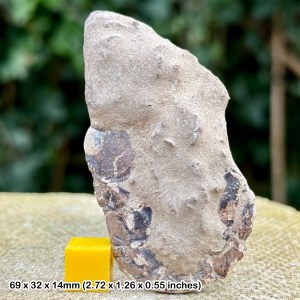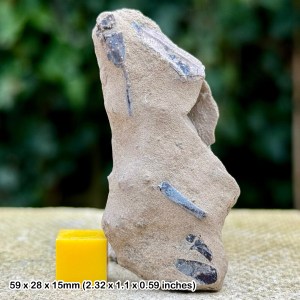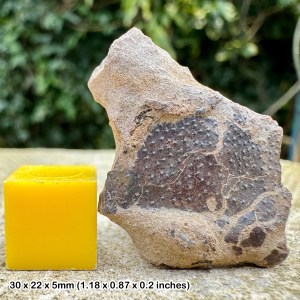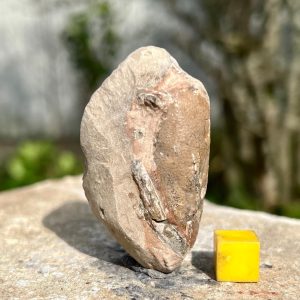Shepherd’s Chine and Whale Chine are superb location that yields some superb fish remains, lobsters, ammonites, brachiopods, bivalves, and occasional reptile and dinosaur bones. During the right conditions, you can come back with some great specimens.
DIRECTIONS
♦ Parking is limited. You will also need to park on the grass verge next to the road. And be aware this is a very busy road.
♦ From here, there is a footpath down to the beach. You can then walk left, once you reach the shore. The walk may be unsuitable for some people.
♦ Ref: 50.61642°N, 1.37180°W
PROFILE INFO
FIND FREQUENCY: ♦♦♦ – There is a moderate chance of finding fossils here. Although lots of fossils can be found, you will often need the right conditions.
CHILDREN: ♦ – Shepherd’s Chine is not suitable for children.
ACCESS: ♦♦♦ – This location has limited parking and there is a fair walk to the beach.
TYPE: – Most of the fossils are found on the foreshore. You just pick them up, but they can also be found in the cliff.
FOSSIL HUNTING
At Whale Chine, the Upper Crioceras Beds make up most of the cliffs. These consist of grey-to-brown muddy sands, with several lines of large concretions, which can clearly be seen along the Whale Chine cliff line. The concretions contain ammonites (the most common is Chelonioceras), bivalves and plant remains. At the bottom of the cliffs to the southeast of the Chine are the Walpen Clay and Sands. Ammonites (Cheloniceras and Dufrenoyia) and several different bivalves can be found here.
Along the coast at Shepherd’s Chine, a wide range of fossils can be found. At Atherfield Point, during scouring and extreme low tide conditions, lobsters can be found on the foreshore. Most of these can be found by simply using a knife or pick to lift them out of the foreshore. Between Shepherd’s Chine and Whale Chine, there is a bone bearing bed, which is full of teeth and other small remains. This is a very hard bed, but is thin and can easily be split. During scouring conditions, this bed forms a platform along the beach.
At Whale Chine, concretions contain ammonites, with the most common being Chelonioceras. They also contain bivalves and plant remains. Towards the east of the Chine, ammonites (Cheloniceras and Dufrenoyia) and several different bivalves can be found.
To the west of the Chine, you will reach the Scaphites Beds and the Lower Crioceras Beds, which are unfortunately very difficult to distinguish. Ammonites (Australiceras, Tropaeum and Cheloniceras) are quite common. The Ferruginous Sands follow, made up of muddy brown sands. Fossils can be found in the phosphatic and pyritic concretions.
To the east of Shepherd’s Chine, at the base of the Atherfield Clay, the Perna Bed can be seen. This contains many bivalves, gastropods, brachiopods, worm tubes and corals. Occasionally, ammonites can be found. Two lines of large, sandy calcareous concretions, known as the ‘Crackers’, are normally clearly visible and, six metres below, this in silty clays are the Lower Lobster Beds. These can yield the prawn, Meyeria, with bivalves, gastropods, crustaceans and echinoderms and ammonites. A heavy hammer is required to crack these. Above the ‘Crackers’, the Upper Lobster Beds are very similar to the Lower Lobster Beds, but not as fossiliferous. Most of the fossils can be found during scouring conditions and fossils can often simply be picked out of the clay.
Between Shepherd’s Chine and Whale Chine, there is a hard, thin cement type layer. This layer is packed with teeth and is often found in a hard layer along the beach.
Fossils can also be found at the base of scree slopes.
GEOLOGY
At Whale Chine, the Upper Crioceras Beds of the Lower Greensand Group make up most of the cliffs. These consist of grey-to-brown muddy sands, with several lines of large concretions which can clearly be seen along the Whale Chine cliff line. At the bottom of the cliffs to the southeast of the Chine are the Walpen Clay and Sands. To reach these, you will need to head east of the Chine.
Continuing west of the Chine, you will reach the Scaphites Beds and the Lower Crioceras Beds, which are unfortunately very difficult to distinguish. The Ferruginous Sands follow, made up of muddy brown sands. Fossils can be found in the phosphatic and pyritic concretions.
You will eventually reach the east of Shepherd’s Chine. The Atherfield Clay of the Lower Greensand Group (Aptian age) here is the most interesting of that found between Whale Chine and Shepherd’s Chine. At the base of the Atherfield Clay, the Perna Member can be seen. Two lines of large, sandy calcareous concretions, known as the ‘Crackers’, are normally clearly visible and, six metres below, in silty clays are the Lower Lobster Beds. Above the ‘Crackers’, the Upper Lobster Beds are very similar to the Lower Lobster Beds, but not as fossiliferous.


SAFETY
Common sense when collecting at all locations should be used and knowledge of tide times is essential. The tidal conditions at this location are dangerous. You must return before the tide turns and must check out tide times before you visit. It is very easy to get cut off.
You must also take care if walking over the slippages, as these can be very sticky and you may get stuck.
EQUIPMENT
Most of the fossils can be picked up off the foreshore, without the need of any tools. However, it is best to take a few, which may come in useful.
ACCESS RIGHTS
This site is a site of special scientific interest (SSSI). This means you can visit the site, but hammering the bedrock is not permitted. For full information about the reasons for the status of the site and restrictions, download the PDF from Natural England.
It is important to follow our ‘Code of Conduct’ when collecting fossils or visiting any site. Please also read our ‘Terms and Conditions‘
LINKS
♦ Buy Fossils, Crystals, Tools
♦ Location Discussions
♦ Deposits Magazine
♦ Join Fossil Hunts
♦ UK Fossils Network
-
A guide to fossil collecting in England and Wales
£24.20 -
British fossil lobster – meyeria magna, isle of wight, uk – unique marine life
£18.00 -
British Fossil Lobster Meyeria Magna, Isle of Wight, UK
£19.20 -
British Lobster [Meyeria magna] from Isle of Wight, UK
£24.00 -
Exquisite Meyeria Magna Fossil Prawn – Cretaceous Isle of Wight, UK – Authentic with COA
£24.00 -
Exquisite Meyeria Magna Fossil Prawn – Cretaceous Isle of Wight, UK – Authentic with COA
£12.00 -
Exquisite Meyeria Magna Fossil Prawn – Cretaceous Isle of Wight, UK – Authentic with COA
£8.40 -
Exquisite Meyeria Magna Fossil Prawn – Cretaceous Isle of Wight, UK – Authentic with COA
£8.40 -
Genuine British Fossil Shrimp: Rare Cretaceous Specimen from the UK with Certificate of Authenticity
£22.80

























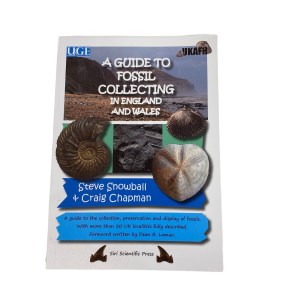
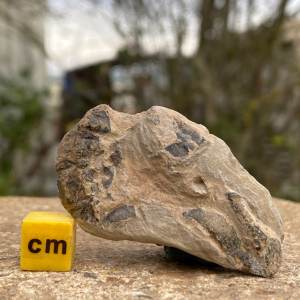
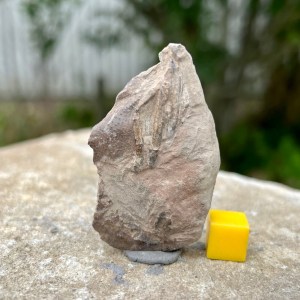
![British Lobster [Meyeria magna] from Isle of Wight, UK](https://ukfossils.co.uk/wp-content/uploads/2024/01/654c09eb1bd68ce4c896924c-300x300.jpg?crop=1)
